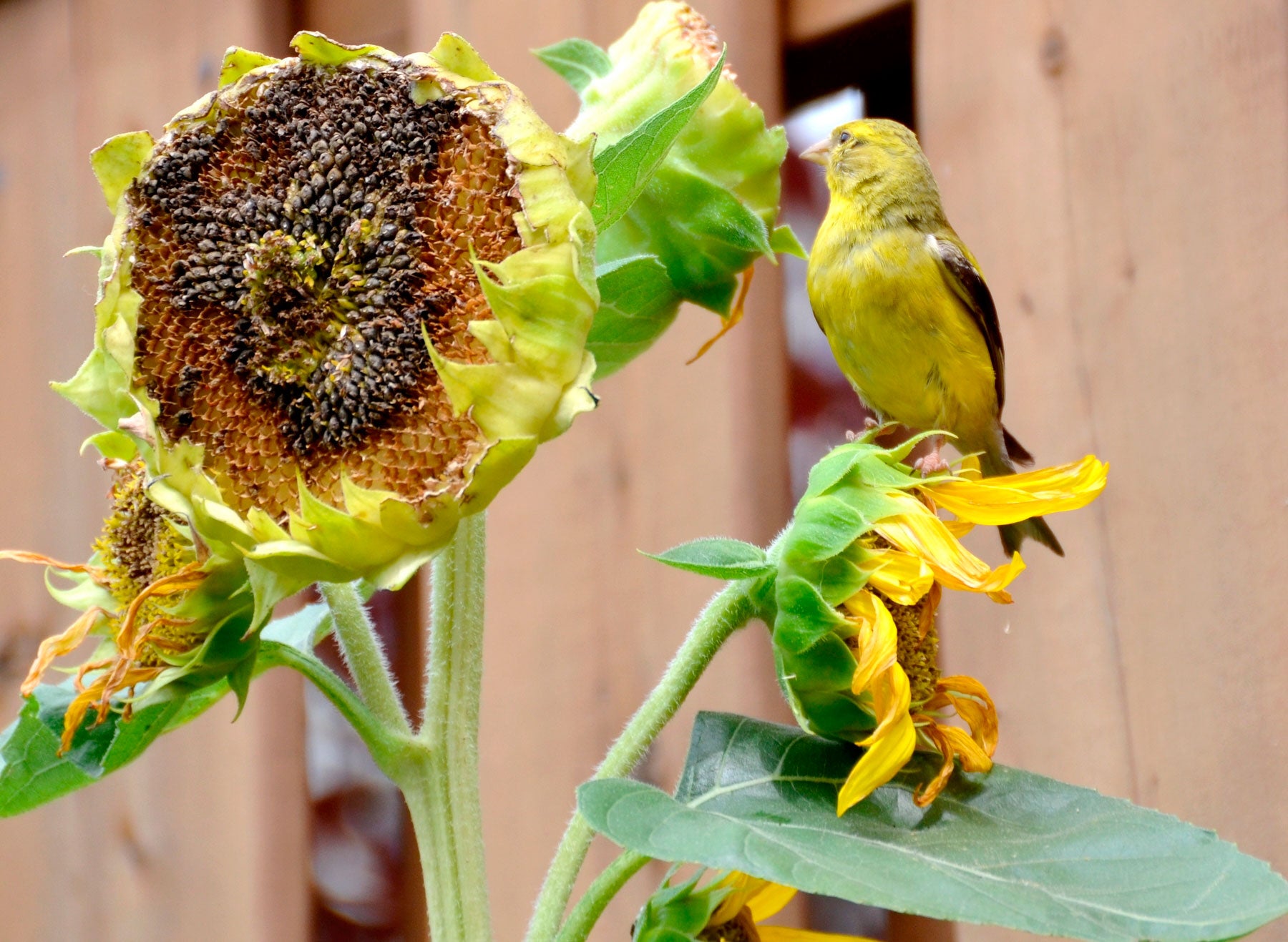Sunflower Seed Heads And Kids: How To Use Sunflower Heads To Feed Birds

There's really nothing so entertaining and, yet, relaxing as watching and feeding birds, especially with children. Hanging a sunflower bird feeder in the garden is an inexpensive, sustainable option that will have many types of birds visiting the yard in droves. Read on for more information on using sunflower heads with kids.
Sunflower Seed Heads
There is a myriad of sunflower varieties to choose from that are suitable for growing either as ornamentals or for edible seed harvest. Traditional sunflowers grow to a height of about 5 plus feet (1.5 m.) and are typically a sunny yellow, but modern hybrids come in dwarf varieties of 1 to 2 feet (31-61 cm.) and a wide range of yellows, burgundies, reds, bronzes, and browns. All of these sunflower seed heads are enticing to birds, from chickadees to siskins, redpolls, nuthatches, and goldfinches.
Using Sunflower Heads with Kids
Using sunflower heads to feed birds is a fun, educational activity to engage in with your children. Not only are sunflowers easy to grow in almost any type of garden soil and climate but creating a hanging sunflower bird feeder is a simple “hands on” process suitable for even the smallest child to take on…with a little assistance from you. Natural bird feeders made from sunflowers teach children about nature and its cycle from seed to plant to food as new seeds are formed.
Sunflower Bird Feeding Activity
Easy to grow, sunflowers are a boon not only to the birds as seasons end, but during the growing season, they attract valuable pollinators. Once that use is over, the drying heads can be recycled into a winter-feeding station for not only the above-mentioned birds but also:
- jays
- grosbeaks
- juncos
- buntings
- titmice
- bluebirds
- blackbirds
- cardinals
Sunflower seeds are packed with minerals such as potassium, calcium, magnesium, and iron along with Vitamin B complex. High in protein, fiber, and polyunsaturated fat, using sunflower heads to feed the birds will keep these little warblers chubby and active. Ideally, you want the largest sunflower heads possible for creating sunflower bird feeder. Some varieties that are apropos include:
- ‘Sunzilla'
- ‘Giant Gray Stripe'
- ‘Russian Mammoth'
Big heads last longer as a feeder and are easier to work with, although birds aren't picky and will gladly snack on any variety of sunflower seed. If you haven't grown these large flowers in your garden for space reasons or what have you, ask around. Perhaps friends, neighbors, or even a local farmers' market has spent flower heads they will gladly part with. When the sunflowers are well-formed and the heads begin to dry, cut the top ¼ off at the stalk and let the flower and stalk dry in a cool, well aerated spot for a few weeks. They are dry when the front of the head is a crispy brown hue, and the back of the head is yellow. You may need to cover the maturing sunflower heads with cheesecloth, netting, or a paper bag to thwart your bird friends from sampling too early. Don't put them in a bag or container which may retain moisture and cause the sunflower to mildew. Once the sunflower has cured, cut off the remaining stem from the flower. Then make a couple of holes near the top of the head and thread florist wire through them. You can now hang the head on a fence or tree branch for the birds to munch on. You can hang sprays of millet from the flower head as an additional snack for the birds and/or adorn the sunflower with a bit of raffia tied into a natural bow. Of course, you can also leave the sunflower heads on the plants and allow the birds to feast from there, but it is nice to bring the flower closer to the house where the birds can be viewed from a cozy window during the chilly fall and winter months.
Sign up for the Gardening Know How newsletter today and receive a free copy of our e-book "How to Grow Delicious Tomatoes".

Amy Grant has been gardening for 30 years and writing for 15. A professional chef and caterer, Amy's area of expertise is culinary gardening.
